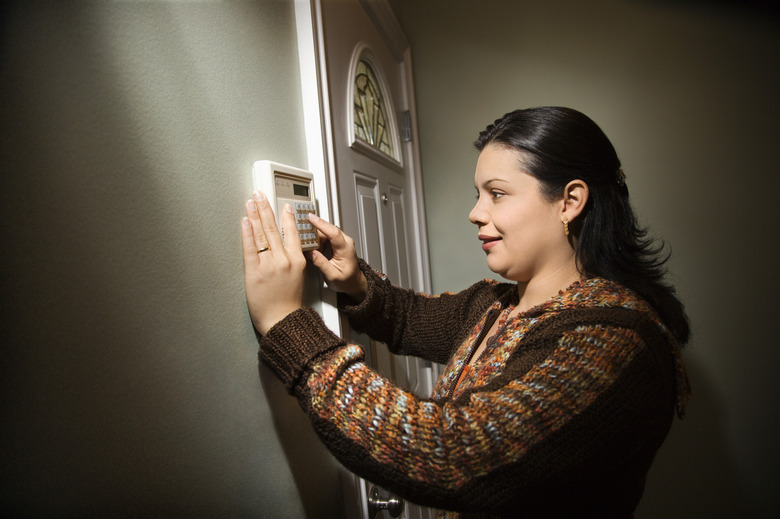How To Remove A Brinks Alarm System
Things Needed
-
Household tools
-
Glue solvent
Removing a Brinks alarm system can be done by canceling service with Brinks and asking it to remove its equipment from your home (you may be charged for this). Because the removal of Brinks security equipment isn't difficult, it can easily be done my most people. Always cancel your service first; otherwise, Brinks will suspect that an intruder is tampering with the system.
Step 1
Locate the main control unit. Remove it from the wall. Depending on the model of the control unit, this can be done by removing the main cover from the panel and then unscrewing the mounting screws underneath. The main cover usually has clips that can be popped off from the bottom of the unit.
Step 2
Remove the batteries from the control unit. The control unit has batteries in case of a power failure.
Step 3
Locate the power wire from the control unit. This will be labeled. Follow the power wire until the power source is reached. Typically, the unit is plugged into a power outlet located in another room. This is done for security reasons. Unplug the unit from the power source once you find it.
Step 4
Unplug all other wires that connect to the control unit. Most sensors and monitors are powered by battery and not through the main unit. However, some older models may still be wired.
Step 5
Remove the sensors from the doors and windows. Go to every door and window in the house and remove the magnetic sensors from them. Use a glue solvent to ensure that the adhesive doesn't remove paint when the sensors are pulled off.
Step 6
Remove motion-sensor devices. These are typically screwed into the house or affixed with a strong adhesive. Unscrew or use a glue solvent to remove any motion sensors.
Step 7
Remove any smoke or CO2 detectors that were associated with the Brinks security system. Smoke detectors are either screwed in or stuck with adhesive to the ceiling; CO2 detectors are typically just plugged into the wall. Replace CO2 and smoke detectors immediately after the Brinks ones are removed.
References
- "Low Voltage Wiring: Security/Fire Alarm Systems"; Terry Kennedy, et al.; 2001
- "The Complete Idiot's Guide to Home Security"; Tom Davidson; 2001
- "Home Security, Second Edition: Alarms, Sensors and Systems"; Vivian Capel; 1997
